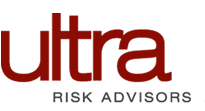We know that physician practices can benefit tremendously by developing and following a proactive risk management program. Sound practices can improve patient safety, avoid lawsuits and ensure consistent regulatory compliance. Each practice is unique and therefore needs an individualized approach based on factors such as specialty type and patient profiles – but we have outlined five general best practices to get started in reducing risk through improved patient outcomes.
#1 – Foster good communication with patients
Communication is the number one issue in any medical setting – physician and nurse practitioner clinics are no exception. If physicians and staff take even a few minutes of extra time to answer all questions and address all concerns, patients and their families will walk away feeling as though they had all the information – even if a bad outcome occurred. For a busy physician, it can feel as though there simply isn’t enough time to talk to patients, but from a risk management perspective, the importance cannot be stressed enough. It’s imperative to take the time to communicate every step of a patient’s care with them – to listen and answer their questions. Not only does this help to build trust, it can also minimize the risk of a lawsuit. Excellent communication is a “win-win.” Also, patients should be encouraged to speak up when something seems off or they have a question.
#2 – Follow proper documentation procedures
Documentation can make or break a case when attorneys become involved. Be sure everything is documented including all test results as well as the date, time and subject of all conversations with the patient and family members. In the event of an adverse outcome where the court becomes involved, the ability to say and show all conversations is essential. Never improperly alter a chart. The one thing that can destroy even a fully defensible case is evidence of improper chart alteration.
#3 – Maintain thorough and safe medical records
The physician practice setting leaves many opportunities for accidental breaches simply because so many patients are cycled through the facility on any given day. Printed medical records must be kept safe and strictly out of the public view – and that includes being locked away each night. It’s essential that facilities have protocols in place that diligently track the security of medical records at every step. Ensuring patient confidentiality will prevent HIPAA violations. Violations could be caused by texting patient information that is not encrypted, using a home computer to access patient information where the screen is accidentally left open or discussing a patient condition in a social situation or in social media.
#4 – Don’t delay diagnosis
Patients often don’t realize how long it may take for medical tests to return. Some lab tests can take days or weeks. Physician practices should have an efficient procedure in place for obtaining results and informing patients in a timely manner. For example, if a patient had an MRI due to an unidentified growth in breast tissue and the MRI indicates suspicion for cancer, how does the facility ensure that test results aren’t getting lost in the shuffle? If gone unconfirmed, the cancer could spread and lead to a bad outcome. It’s important that a system needs to be in place to get the results to the patient and family to determine treatment options right away.
#5 – Seek the perspective of an outside, objective party
It can be extremely helpful to find a third party partner with experience and expertise that may not be available within the practice – especially in small offices. Risk management specialists with diverse skill sets and up-to-date industry knowledge can offer valuable insights and confidential advice. Consultants may also offer tools such as sample checklists, forms and policies and procedures as well as ongoing tips that will keep risk management and patient safety top of mind.
The key to a successful risk management plan is to be proactive. By focusing on the areas outlined, physician practices can thoroughly assess and prioritize weaknesses and then develop a systematic approach to reducing risk in each area. Finding the necessary resources and carefully following a plan will go a long way in getting ahead of adverse events and preventing lawsuits.







COMMENTS
No comments yet. You should be kind and add one!
The comments are closed.